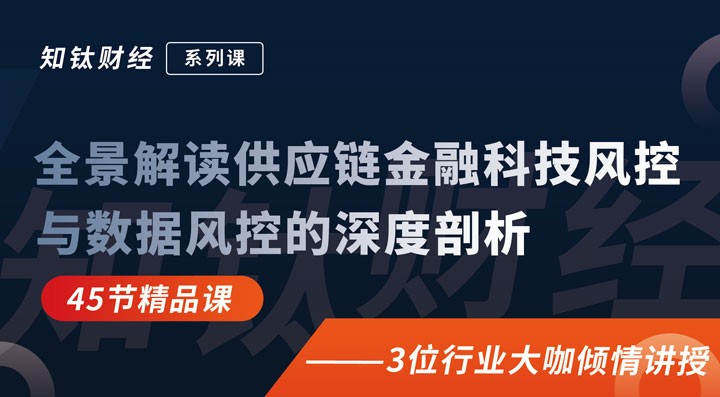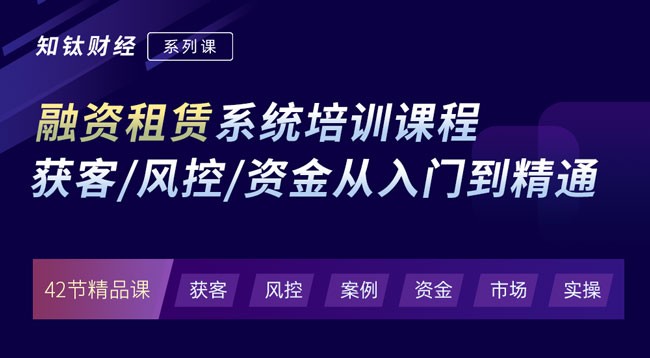《孙子兵法》如何指导在华财资管理?
With the development trend of globalisation, multinational corporations in the global economy face new challenges. China is still a socialist country, but its banki
|
With the development trend of globalisation, multinational corporations in the global economy face new challenges. China is still a socialist country, but its banking sector has consistently grown and is undergoing a historical and cultural transformation. |
天和网天和财务频道消息:随着全球化发展的趋势,跨国公司面临了全球经济下的新挑战。中国仍是一个社会主义国家,但其银行业一直在增长并经历了历史和文化的转变。 |
||
|
Chinese banks have continued their expansion abroad, particularly in the Asia-Pacific region. This expansion is mainly through organic growth by establishing new branches and subsidiaries, as well as through some mergers and acquisition (M&A) activity. Meanwhile, European and US banks have increased their stake in Chinese banks. |
中国银行继续在海外尤其是亚太地区扩张。这种扩张主要是通过并购和建立分公司、子公司寻求有机增长。同时,欧美公司已增加了在中国银行的股份。 |
||
|
All Chinese national commercial banks have launched their own cash management services to compete with international banks. They provide corporate clients with standard solutions including collection, payment and account management. |
所有的中国国有商业银行都已推出自己的现金管理服务以参与国际竞争。他们向客户提供包括集合理财、支付和账户管理在内的标准解决方案。 |
||
|
Business Tactic and Strategy: Know Your Business Model |
知己知彼,百战不殆:了解你的商业模式 |
||
|
Sun Tzu’s famous treatise ‘The Art of War’ is applicable not only to war but also to Western business management. The book inspired many ideas as to how to succeed in competitive business situations. We believe that it can also be applied to the field of treasury management. |
《孙子兵法》不仅适用于战争,也适用于西方商业管理。该书激发了许多关于如何在商业竞争环境里成功的理念。人们认为它也可用于财资管理领域。 |
||
|
International companies willing to do business in China should take a long look at certain parameters in their home country before setting up a subsidiary in China, in order to evaluate the type of organisation and its characteristics in terms of: |
有意进行在华贸易的跨国企业在建立子公司之前应该目光长远地看待中国的某些参数。此目的是为了依照以下几条评估组织类型及其特点。 |
||
|
1.Structure. |
1.结构 |
||
|
2.Size of company, overall relationships and geographical representation. |
2.公司规模、总体关系和地区代表制 |
||
|
3.Operative mechanisms and shared procedures and/or practice. |
3.有效的机制和共享程序 |
||
|
4.Human resources (HR) and staff management. |
4.人力资源和人员管理 |
||
|
5.Business strategy. |
5.企业发展战略 |
||
|
6.Decision-making model: flexible or bureaucratic style. |
6.决策模型:灵活的或官僚的作风 |
||
|
7.Typical market approach: offensive or defensive. |
7.典型的市场方法:进攻型或防守型的 |
||
|
Once these details are clear, then a gap analysis between the parent company and its subsidiary can begin. Initially, it is important to establish the structure of the company in relation to its subsidiaries. |
只要这些细节是清晰的,就可以开始总公司和子公司之间的差异分析。首先,建立结构框架很重要。 |
||
|
In a centralised organisation, the parent company is responsible for financing subsidiaries. The treasury team based in the home country regulates the financing activities and maintains the banking relationships. On the other hand, transmission of information is slower between the parent company and its subsidiary (e.g. account statement or reports) than if the organisation was decentralised. |
在集权型组织结构中,总公司负责向子公司提供资金。位于本国的财资部团队监管融资活动和维护银行关系。总公司与子公司之间的信息传输(如账目声明或报告)要比分散型组织内的慢。 |
||
|
In a decentralised organisation, local treasury teams have the power to make decisions as they are more financially independent and able to more quickly respond to market changes. However, the treasury team in the home country must anticipate lack of supervision and have risk awareness policies in place. |
在分散型组织里,财务相对独立的当地财资部门有权做决策,并且应对市场变化的速度更迅即。本国的财资部门必须在缺乏监督的情况下做出正确的预测,并有到位的风险意识和政策。 |
||
|
Our best practice recommendation is to set up a flexible and homogenised treasury management culture, with flexible working processes and smooth communication between home and host country. An ideal scenario becomes reality when home country and subsidiaries share a homogenised IT system, the same banking communication process and an enterprise resource planning (ERP) system. |
最佳操作建议是:建立一个灵活行动统一的财资部门文化、灵活的工作流程和本国和东道国之间的良好关系。当本国公司与子公司之间共享一个行动统一的IT系统、同一个银行沟通程序和企业资源规划系统,那么理想将变为现实。 |
||
|
A mixed combination of centralisation and decentralisation organisational structure is highly recommended to obtain effective control and avoid situations of imbalance. It is important to develop regular information flows (e.g. intraday alerts). |
混合型—集权型和分散型—组织结构得到高度推荐使用,因为这种框架下企业能获得良好的控制并避免不平衡的情况发生。重要的是要建立常规信息流动(如一天当中的警告)。 |
||
|
China-specific Issues |
以下是企业在华将面临的问题。 |
||
|
Restricted access to credit |
限制进入信贷 |
||
|
Banks are required by the China Banking Regulatory Commission (CBRC) to maintain a loan-to-deposit ratio of less than 75%. However, with total bank deposits on a downward trend due to the negative real interest rate environment, the loan-to-deposit ratio of banks has been forced up, reducing the amount of available credit. As a consequence, companies often face difficulties in obtaining credit. |
中国银监会要求银行的贷存比维持在75%以下。然而,鉴于负实际利率环境,银行存款总额处于下行趋势,银行的贷存比率被迫提升,从而减少可用信贷的数量。因此,企业往往难以获得贷款。 |
||
|
Our best practice recommendation is to reinvest and avoid trapped cash or repatriation of cash. For example, a French fashion retail company manufacturing clothes in China has set up a wholly foreign-owned enterprise (WFOE), where involvement of a mainland Chinese investor is not required. The home country company can buy clothing material in euros from the host country subsidiary or WFOE. The Chinese WFOE converts euros into renminbi (RMB). As access to credit is complex, most of the converted RMB amount is reinvested locally. |
最佳操作建议:再投资避免被困现金回流至本国。例如,一个法国时装零售公司在中国设立一家独资的制衣企业,大陆投资者不强制要求入股。本国公司可以用欧元从主办国的子公司或独资公司购买原材料,然后由中国的独资公司将欧元换成人民币。由于获得信贷的过程很复杂,大多数被置换的人民币在当地再投资。 |
||
|
Working capital management (WCM) is very important for those corporates that cannot afford to keep excess cash in some entities while funding other entities, due to the gap between the lending rate and the deposit rate in China. |
由于在华的贷款利率和存款利率之间存在差距,因此营运资本管理对那些无法同时资助其他实体和在一些实体里保存过剩资金的企业来说至关重要。 |
||
|
Changing regulatory environment |
改变监管环境 |
||
|
The regulatory environment in China is changing and can generate unexpected situations. Deposits are regulated and loan rates are subject to limited variability. Local banks attach much importance to deposits because China's banking authority, the CBRC, monitors their loan/deposit ratios. Another factor is that the interest rate is regulated, so the margins are more or less guaranteed. This renders business for local Chinese banks more secure than hedging transaction banking fees. |
中国的监管环境总是在变化并产生意想不到的情况发生。存款得到监管,贷款利率受制于有限的可变性。当地银行非常重视存款,因为作为官方的银监会将监控它们的贷款或存款比率。另一个因素是利率被管制,因此利润或多或少得到保障。这使得当地中国银行的业务比对冲交易银行费用更安全。 |
||
|
Our best practice recommendation is to be aware that handling unexpected shifts in government policy is a challenge for corporate treasurers in China. And it is almost impossible for corporations to foresee the changes. Deposit management is key to meeting preventive daily business needs. Therefore, it is best to have local and flexible treasury management teams able to face change in regulatory environments. |
最佳建议是:企业要意识到政府处理意想不到转变的政策对在中国的财资部门是一种挑战。企业几乎不可能预测到转变,存款管理是企业预见性地满足日常业务需求的关键。因此最好是由本土化的灵活的财资部门来应对监管环境的变化。 |
||
|
Increasing RMB internationalisation |
人民币日渐国际化 |
||
|
In its July 2012 RMB Tracker SWIFT detected a 40% to 60% increase in the number of countries and institutions processing RMB payments from June 2011 to June 2012. The top RMB payment banks increased the number of RMB relationships by 68% in that same period, from an average of 91 to 153 correspondents. |
2012年7月份,环球同业银行金融电讯协会(SWIFT)的人民币追踪代码监测发现,在2011年6月到2012年6月这一年里,处理人民币支付业务的国家和机构数量增长了40%到60%。同期,排在前几位的人民币支付业务银行在维护人民币关系方面的人员从平均91人增加到153人,增长幅度是68%。 |
||
|
Over this same period, the international adoption of the RMB grew significantly, as the number of countries and institutions processing RMB payments expanded from 65 to 91 (40% increase) and from 617 to 983 (60% increase) respectively. These figures are a good indication of the fast growing RMB international adoption. |
同期的人民币全球采用量大大提高,处理人民币支付的国家和机构数量分别增长了40%(从65个增长到91个)和60%(从617个增加到983个)。这些数据很好地显示了人民币全球采用量快速增长。 |
||
|
Our best practice recommendation is that both foreign and domestic companies that wish to raise RMB for business development should adopt a foreign exchange (FX) strategy. Multi-currency cash pooling can manage investments and revenues in multiple currencies in order to hedge FX risk. |
我们建议意图筹集人民币以开展业务发展的国内外企业,应该采用外汇策略。多种货币融资可以帮助企业以多种货币进行投资和收入管理,以防对冲外汇风险。 |
||
|
Increasing mobile payment |
增加移动支付 |
||
|
With one billion mobile phone users, China is the world’s largest mobile phone market, driving the global development of mobile banking services. Chinese telecommunications companies and banks have already expressed their ambitions to grow in this market by joining together. Given the banking dynamics in China and the need to provide access to financial services to people across a vast country, mobile-based banking services will be considered as a strategic development. |
拥有十亿手机用户的中国是全球最大的手机市场,它推动了全球手机银行服务的发展。中国电信公司和银行已经表达了在手机市场联手发展的雄心。由于中国的银行业处于动态之中,并且在如此幅员广阔的国家里向人们提供金融服务,因此手机银行业务被认为是一个战略发展。 |
||
|
Our best practice recommendation is that both foreign and domestic companies that wish to do business in China should consider mobile payments for collection and receivables. |
我们建议想在华做生意的国内外公司应该考虑手机支付收集和应收账款。 |
||
|
Conclusion |
结论 |
||
|
China is changing quickly. Three potential developments that could change business approaches include: |
中国正在迅速改变。可能改变业务方法的三个潜在发展因素是: |
||
|
1.A liberalisation of deposit rates. |
1. 存款利率自由化。 |
||
|
2. Increased deregulation. |
2. 放松管制增加。 |
||
|
3. More policy developments to allow corporates to repatriate cash out of China. |
3. 更多的政策发展允许企业从中国重返现金。 |
||
|
In addition, a number of national and regional government initiatives are already being rolled out. |
此外,许多国家和地区政府已推出了相关举措。 |
||
|
In August 2012, China extended a nationwide trial of simplified procedures to pass foreign currencies between banks and companies in goods trades. Companies no longer need to carry out the procedures for verification and settlement of their FX received from exports. Instead, the State Administration of Foreign Exchange (SAFE) will regularly check export/import transactions and FX receipts/expenditures derived from trade of each enterprise. SAFE's FX monitoring system for trade in goods replaces the former FX payment and collection verification system. As a result, foreign trade will be more convenient and increase trading firms' global competitiveness. |
2012年8月,中国发起了对通过银行和公司在交易中使用外国货币的审批。企业不再需要执行验证和出口外汇结算的程序。相反,国家外汇管理局将定期检查导出/导入交易和来自各个企业贸易的外汇收入/支出。国家外汇管理局的货物贸易外汇监测系统取代了以前的外汇支付和收集验证系统。因此,对外贸易将会更便利地增加贸易公司的全球竞争力。 |
||
|
China is pushing for an upgraded national payment system, with the China National Advanced Payment System (CNAPS) to migrate soon to CNAPS 2. The enhanced system will have a wider functionality and will also allow large amounts of RMB to be cleared across regional borders. However, China's network of fragmented local clearing systems remains in place. |
中国正在推动国内支付系统升级,将中国国家现代支付系统CNAPS升级到CNAPS2。升级后的系统将有一个更广泛的功能,允许大量人民币在边界地区结算。然而,中国当地结算系统各自为政的现象依然存在。 |
||
|
China is also extending connectivity between the RMB clearing system and other capital markets systems, such as the stock exchange or the central clearing system for bonds. CNAPS is now being connected with the bond clearing system in Hong Kong. Customers can buy and sell bonds in RMB via an automated cross-border payment. The whole operation is automatically processed in RMB. |
中国也在推动人民币结算系统和其他资本市场体系(如股票交易市场或中央债券结算系统)之间的联系。中国国家现代支付系统正处于与香港债券结算系统的联系中。客户可通过跨境支付购买和出售人民币债券。整个操作以人民币自动进行处理。 |
||
|
Shanghai and Beijing have launched schemes for multinational companies (MNCs) to establish regional treasury centres (RTCs) in China. As they offer preferential policy treatment and streamlined approval processes, many MNCs looking to establish RTCs for Asia are now interested in these locations. |
北京和上海已出台了允许跨国公司建立区域财资中心的方案。这两地为跨国公司提供优惠政策以及合理化审批程序,因此许多公司对在两地建立亚洲区域财资中很感兴趣。 |
||
|
All of these developments means that the operating environment in China is becoming more attractive to MNCs and their treasury departments. |
对跨国公司及其财资部门而言,所有这些发展都意味着中国的运营环境正变得更有吸引力。 译者:许怡勤 |
 表情
表情

